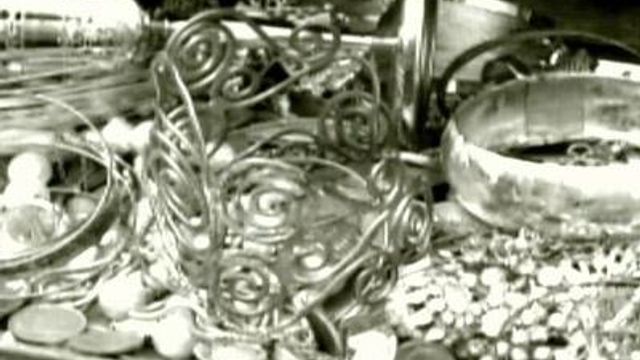Smithsonian to examine remains thought to be of pirate
Descendants of a Colonial-era resident of Bath who is thought to have once sailed with the famous pirate Blackbeard took possession of his remains Friday.
Posted — UpdatedThe bones were uncovered in 1986 during a construction project on the shores of Bath Creek and have been kept in storage by the state Department of Cultural Resources ever since.
Raleigh researcher and Outer Banks historian Kevin Duffus said he thinks the bones are the remains of Edward Salter, a barrel-maker forced into piracy.
"A pirate for 11 months, mostly against his will. He sailed with Blackbeard,” he said.
Duffus said Salter's name is on a document listing rewards for the capture of pirates. He was arrested in Bath after Blackbeard's death in 1718 and taken to Williamsburg, Va., to be executed.
"All the historians and records indicate that he was actually hanged,” Duffus said. However, Duffus also found another document that states that Salter was given a pardon.
Duffus said he thinks that after sailing with Blackbeard on the Queen Anne’s Revenge, Salter became a merchant in Bath and died unexpectedly after a brief illness in January 1735.
For more than two decades, Duffus said Salter's remains have been in storage in Raleigh. Then a few years ago, Duffus located some of Salter's descendants, and they came forward asking for the bones.
"I think he (Salter) is ready to get out of that warehouse and go back home,” said Brian Blount, a ninth-great grandson of Salter.
However, State Archaeologist Steve Claggett said he has doubts that the remains found along Bath Creek belonged to Salter.
"The connection, as far as I know, cannot be proved based on documents," Claggett said.
Virginia Bass, of Rogersville, Mo., an eighth-generation descendant of Salter, went to the North Carolina Office of State Archeology Research Center in Raleigh Friday to take possession of the bones.
The bones were then transported to the Smithsonian's National Museum of Natural History. The descendants have asked the museum to look into their claim and test the bones for clues to the physical activities, place of birth, age and cause of death.
After the tests are complete, the bones will be returned to Bath for reburial in October.
"This is a very significant figure in North Carolina colonial history who deserves to be recognized and remembered and be buried decently," Duffus said.
• Credits
Copyright 2024 by Capitol Broadcasting Company. All rights reserved. This material may not be published, broadcast, rewritten or redistributed.






